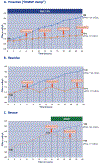Hyponatremia Demystified: Integrating Physiology to Shape Clinical Practice
- PMID: 36868737
- PMCID: PMC9993811
- DOI: 10.1053/j.akdh.2022.11.004
Hyponatremia Demystified: Integrating Physiology to Shape Clinical Practice
Abstract
Hyponatremia is one of the most common problems encountered in clinical practice and one of the least-understood because accurate diagnosis and management require some familiarity with water homeostasis physiology, making the topic seemingly complex. The prevalence of hyponatremia depends on the nature of the population studied and the criteria used to define it. Hyponatremia is associated with poor outcomes including increased mortality and morbidity. The pathogenesis of hypotonic hyponatremia involves the accumulation of electrolyte-free water caused by either increased intake and/or decrease in kidney excretion. Plasma osmolality, urine osmolality, and urine sodium can help to differentiate among the different etiologies. Brain adaptation to plasma hypotonicity consisting of solute extrusion to mitigate further water influx into brain cells best explains the clinical manifestations of hyponatremia. Acute hyponatremia has an onset within 48 hours, commonly resulting in severe symptoms, while chronic hyponatremia develops over 48 hours and usually is pauci-symptomatic. However, the latter increases the risk of osmotic demyelination syndrome if hyponatremia is corrected rapidly; therefore, extreme caution must be exercised when correcting plasma sodium. Management strategies depend on the presence of symptoms and the cause of hyponatremia and are discussed in this review.
Keywords: Arginine vasopressin; Hyponatremia; Osmotic demyelination syndrome; Plasma tonicity; Urea.
Copyright © 2022 National Kidney Foundation, Inc. Published by Elsevier Inc. All rights reserved.
Figures





References
Publication types
MeSH terms
Substances
Grants and funding
LinkOut - more resources
Full Text Sources

